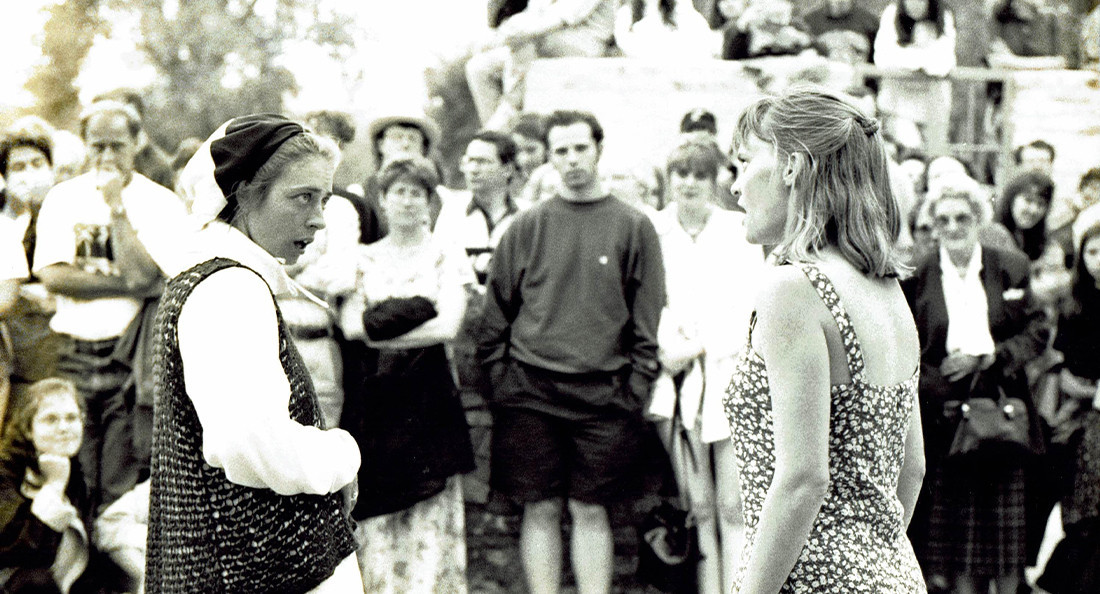Invigorating the Bard
Origin stories: Shakespeare in the Ruins
Since its inception in 1993, Shakespeare in the Ruins (SIR) has delighted audiences with its innovative approach to William Shakespeare’s works. The Trappist Monastery ruins in St. Norbert, as SIR’s venue for most of its tenure.
SIR began as a small co-op of theatre professionals, at a time when premiere Winnipeg theatres were largely casting out-of-town actors. The founding members included director Ann Hodges, Debbie Patterson, Maggie Nagle, Arne MacPherson, Lora Schroeder, Grant Guy and Michelle Boulet.
While many larger cities, including Toronto, Vancouver, Chicago and New York, were performing Shakespeare in parks, there was nothing like that in Winnipeg. In 1994, SIR staged its first production of Romeo and Juliet.
“Right out of the gate, it found its niche, and there was no going back,” Boulet says. “The first year, we had more school shows than public shows. It was our bread and butter.” SIR has toured stripped-down productions of Shakespeare’s plays to schools since 2004. They also present a full production in the Trappist Monastery ruins every summer.
The original monastery was developed in 1892 by Cistercian monks. In 1978, the monks moved to a more secluded location in Holland, Man. A fire destroyed most of the buildings in 1983, leaving behind the Tyndall-stone chapel that forms most of the ruins. In 2001, a wall fell on Arne MacPherson during a production of Hamlet. The following year, the structure of the ruins was deemed unsafe and closed for reconstruction and reinforcement of the buildings.
During the years-long reconstruction, SIR performed in a number of parks around the city and on the roof of a downtown parkade. Boulet says these venues were great but had some drawbacks. “We were fighting with urban noise all the time,” Boulet says.
As soon as construction was finished in 2012, they were back in the ruins. Thanks to an exclusive contract with the Manitoba government, they have priority control over the park during productions.
Since then, SIR has continued to make innovative promenade-style theatre at the ruins. Audience members are moved from different areas around the buildings to view different scenes. The ruins add a striking effect to each production. The flexibility in staging contributes to the innovative and evolving work of SIR.
In 2016, SIR founded a Shakespeare education and acting program at Stony Mountain Penitentiary. They have also facilitated the development of new plays like Awaken (2020) by Tracy Penner and Head by Debbie Patterson (2006) and The Odyssey (2000) by Rick Chafe, which went on to full productions at SIR.
In 2019, Rodrigo Beilfuss, director and alum of the Stratford Festival, stepped in as SIR’s new artistic director, the first in its 25-year history who was not an artistic associate of the company.
“Many of our city’s greatest actors and technicians started at SIR, “Beilfuss says. “We value up-and-coming voices deeply, and we love working with young people. In terms of outreach and inclusion, we are in the process of assembling a search committee to expand our board. We have also shifted our focus to developing new plays that are Shakespeare-inspired and that look through the perspective of ‘othered’ communities.”
Published in Volume 75, Number 15 of The Uniter (January 21, 2021)






